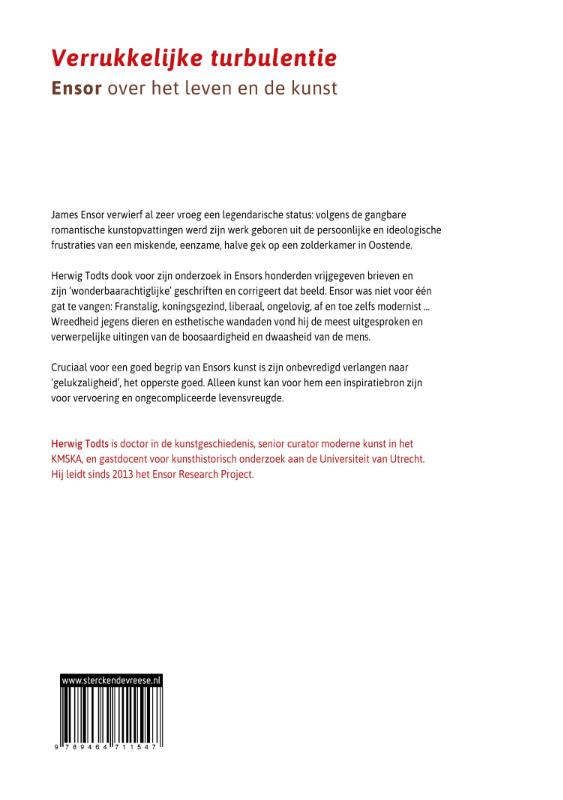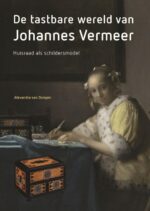Verrukkelijke turbulentie
€ 34,90
James Ensor verwierf al zeer vroeg een legendarische status: volgens de gangbare romantische kunstopvattingen werd zijn werk geboren uit de persoonlijke en ideologische frustraties van een miskende, eenzame, halve gek op een zolderkamer in Oostende.
Herwig Todts dook voor zijn onderzoek in Ensors honderden vrijgegeven brieven en zijn ‘wonderbaarachtiglijke’ geschriften en corrigeert dat beeld. Ensor was niet voor één gat te vangen: Franstalig, koningsgezind, liberaal, ongelovig, af en toe zelfs modernist … Wreedheid jegens dieren en esthetische wandaden vond hij de meest uitgesproken en verwerpelijke uitingen van de boosaardigheid en dwaasheid van de mens.
Cruciaal voor een goed begrip van Ensors kunst is zijn onbevredigd verlangen naar ‘gelukzaligheid’, het opperste goed. Alleen kunst kan voor hem een inspiratiebron zijn voor vervoering en ongecompliceerde levensvreugde.
Herwig Todts is doctor in de kunstgeschiedenis, senior curator moderne kunst in het KMSKA, en gastdocent voor kunsthistorisch onderzoek aan de Universiteit van Utrecht. Hij leidt sinds 2013 het Ensor Research Project.
Gerelateerde boeken
-
-
-
-
Zeven eeuwen Allersmaborg
€ 32,50Zeven eeuwen Allersmaborg
Annette van der Post en Henk Th. van VeenVerscholen tussen de bomen in het Reitdiepdal bij Ezinge ligt de historische borg Allersma. Een statig maar sober gebouw met een lange en rijke geschiedenis, die in dit boek voor het eerst wordt beschreven.
Zeven eeuwen Allersmaborg schetst de levens van voorname Ommelander families die er permanent woonden en van Groninger regenten die in stadpaleizen resideerden en Allersma koesterden als hun buitenverblijf. Veel markante eigenaars en bewoners vanaf de middeleeuwen tot de twintigste eeuw passeren de revue: jonkheren, notarissen, gepensioneerde boeren en kunstenaars.
In de tweede helft van de twintigste eeuw ontwikkelde Allersma zich tot een artistieke broedplek door de gastvrijheid van het kunstenaarsechtpaar Martin Tissing en Annie Vriezen. Nationaal en internationaal opererende kunstenaars laafden zich er aan de betoverende atmosfeer.





